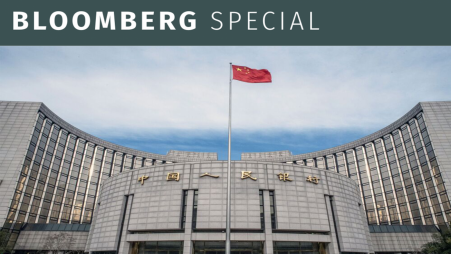China’s policy combo gives investors hope for a market rally
Beijing and Shanghai move to cut down-payment for homes

China's move to pump a record amount of cash into the economy coincided with renewed support for the property sector, sending a more powerful stimulus message to investors after piecemeal approaches had left them disheartened.
The central bank handed commercial lenders $112 billion of one-year loans on Friday, helping to allay concerns over cash scarcity amid a surge in government debt issuance. That came on the heels of a relaxation of home buying curbs in Beijing and Shanghai, an extension of policy efforts to stem an unprecedented housing downturn.
Market reactions suggest the policy combo offered some relief to investors, but more needs to be done. A gauge of Chinese shares in Hong Kong rallied more than 3% before paring its advance after a report that the government has agreed to run a budget deficit of 3% of the gross domestic product in 2024, while benchmarks for mainland shares closed in the red. The yuan hovered near a six-month high.
Investors had been looking to more forceful steps after a drip-feed of measures failed to accelerate the economy's recovery and put a floor under the market's slump. The latest data confirmed a patchy recovery and the need for more stimulus.
"It's too early to call it a turning point given that investor sentiment remains fragile and geopolitical tensions remain a potential source of risk," said Zhong Liang Han, investment strategist at Standard Chartered Bank. The stocks advance on Friday partially points to markets needing some good news to buy China, he added.
Chinese authorities face the challenge of balancing monetary and fiscal stimulus so that just enough liquidity is added to support government bond sales without triggering a slump in the yuan. The tricky task explains why policymakers have refrained from deploying more aggressive monetary tools in recent months, such as an interest-rate cut.
"Lack of confidence is still the key factor hindering growth, but a lower rate will help the economy," said Serena Zhou, an economist at Mizuho Securities. "I still look for 20-basis-point cuts to interest rates and 50-basis-point cuts to the reserve-requirement ratio next year."
On Friday, the People's Bank of China offered commercial lenders a net 800 billion yuan ($112 billion) of one-year loans through the so-called medium-term lending facility. While the central bank kept the interest rate on the funding unchanged, the size of the injection came as a surprise given it was more than twice what had been expected by analysts.
Just minutes before the cash infusion, the PBOC supported the yuan by boosting its daily reference rate to the strongest level since June. The rate, also known as the fixing, limits the onshore currency's moves by 2% on either side.
The developments helped buoy what was already risk-on sentiment following a cut in down-payment ratios for first and second homes in capital Beijing and the financial hub of Shanghai. The loosening is the latest effort to stabilize the nation's real estate market, which along with related industries accounts for about 20% of the economy.
However, investors worry Friday's positive sentiment will be shortlived, as has been the case in numerous post-stimulus stock rebounds this year. Chinese assets, especially equities, have largely maintained a downward trend as concerns over a sluggish economy, geopolitical tensions and the property crisis outweighed any policy optimism.
Data Friday also showed industrial production beat expectations but retail sales fell short and a contraction in property investment deepened.
Illustrating caution, overseas investors turned net sellers of mainland shares in the afternoon after pumping in more than 5 billion yuan via trading links with Hong Kong earlier in the day, according to Bloomberg-compiled data.
The generous cash injection also reduces the odds that the PBOC will take stronger action in the near term, such as reducing the the amount of cash banks need to set aside as reserves.
Market watchers are still debating how China could ease its monetary policy to aid growth. While some argue Beijing should use more targeted tools, others say the central bank needs to lower the RRR to release cheaper and longer-term funding.
What's for sure is that fiscal stimulus will play a bigger role next year. In a meeting earlier this week, China's policymakers called for "appropriately stepped up" fiscal measures, as well as "flexible" monetary policy. That echoed a message from a huddle of the party's 24-member Politburo last week, which was seen as taking a pro-growth stance.
"Injecting liquidity and trying to increase the supply on the financial side is helpful, but probably will not be enough if there is no willingness to spend or to invest," said Louis Kuijs, chief economist for Asia Pacific at S&P Global Ratings. "More needs to be done apparently just looking at how dire the situation is.
Disclaimer: This article first appeared on Bloomberg, and is published by a special syndication arrangement.


 Keep updated, follow The Business Standard's Google news channel
Keep updated, follow The Business Standard's Google news channel
















